Breast Blog
I Love My Breast Implants, But I Wish I Went Bigger
Breast augmentation forums are filled with comments like this: “I love my breast implants, but I wish I went bigger” and “Worth it but kinda wish I went bigger.”
After doing thousands of cosmetic breast surgery consultations, I’ve identified four reasons that women might hold back from choosing the breast size they really want. If you can avoid these traps, you’ll likely be very satisfied with your choice after surgery.
Holding back because you’re worried that “people will know.”
Some women don’t want others to know they had a breast augmentation, so they choose smaller implants: “I don’t want to look fake.” “I don’t want people to notice.” “I don’t want people to judge me,” they say. They need not worry.
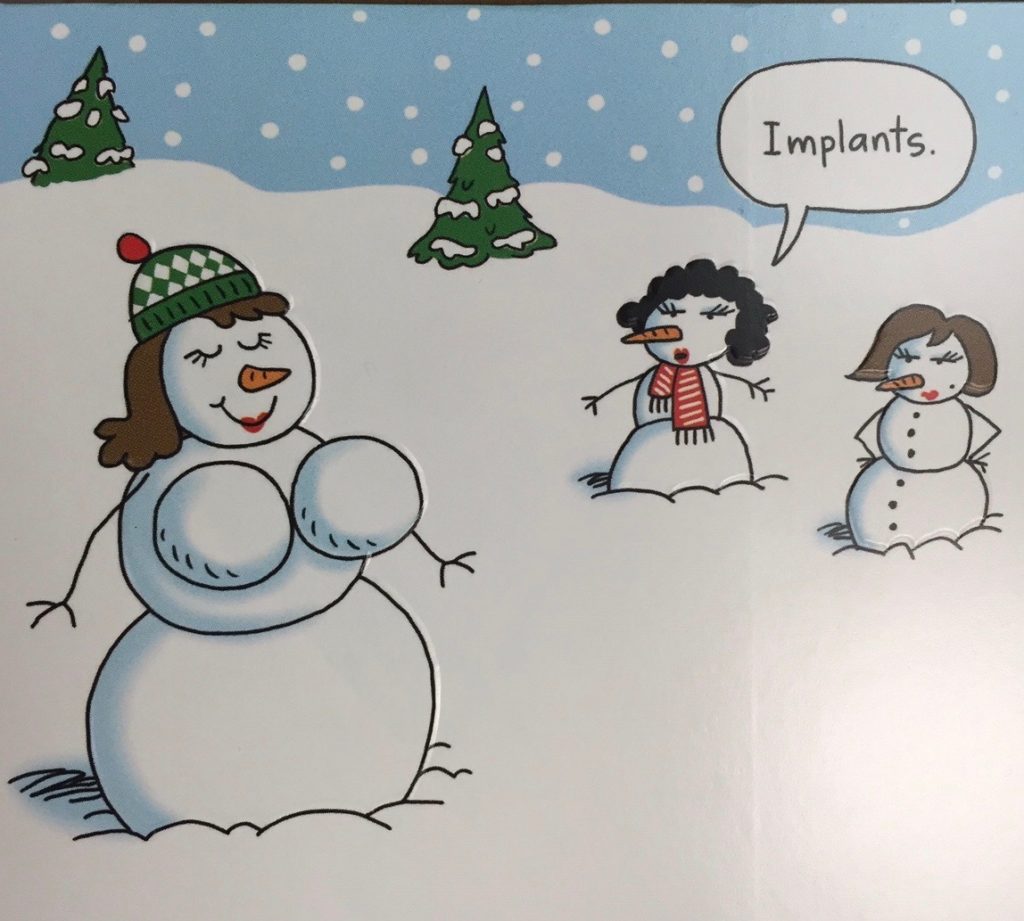
Most women look natural and proportional after their breast augmentation surgery, so the can keep it a secret if they are so inclined. Patients tell me that friends and family members notice that something’s different, but even the most observant ones can’t figure out exactly what’s changed. They ask: “Are you just back from vacation?” “New haircut?” “New outfit?” “Are you working out now?”
Making a decision based on Internet forums and comments from friends.
You might love how the women with 375 cc breast implants looks in her online photos, but are you comparing apples to apples? She might have started with breasts that were bigger or smaller than yours. If you’re starting with a full B cup and that woman started with a mid-A, you won’t be the same size when you both get 375 cc implants. You’ll be about 1-1/2 cup sizes bigger – the extra cup you started with.
Likewise, friends who have breast implants might offer advice: “One of my girlfriends who had a breast augmentation said the implants I picked are too large for me. She has me second-guessing myself,” a patient told me.
Choosing your size by looking at post-op photos taken 3 months after surgery or earlier, instead of looking at fully settled breasts.
When post-op photos aren’t labeled, you don’t know how far along a woman is in the healing process. If you are looking atphotos taken 3 months or less after surgery, consider this: The breast implants haven’t settled yet into their final position. They’re pressed up high, like your breasts would be in a push-up bra. They are not fully settled until 9 months post-op, and at that point they often look smaller than they do at 3 months. You’ll likely be disappointed if you choose your implant size from pictures that were taken too soon after surgery.

In general, your breasts look smaller when you’re dressed than when you’re naked. That’s why my before & after photo books include pictures of women 9 months after surgery unclothed and in a bra, tank top or blouse.
Making a decision based on cup size.
When women come in for their breast augmentation consultation, many tell me that they want to be a “full C cup.” They want to look proportional, and they think this means they’ll wear a C cup bra after surgery. But there’s no standard cup sizing system, and what looks proportional varies from person to person – depending on their height, weight and frame size. Instead of a C cup size, think of it as a C look. Click here to read “Can you make me a full C cup?”
When you come in to the office for your free consultation, I’ll measure you and we’ll discuss your goals. Then, we’ll look at before-and-after photos of women who started out similar to you in height, weight, frame size and breast volume. Every photo notes the size of the implants that were used. It’s like you’re looking through a magic mirror into the future. You get to vote on the breasts you see and tell me: “too big,” “too small” or “just right.”
After you’ve chosen the size that seems right to you, trust yourself. Go with your gut or your heart – not your head. Remember that you’re the expert for yourself.
The Impact of the COVID-19 Pandemic – at Work and at Home
How did COVID-19 affect my professional and my personal life? Dr. Ted Eisenberg wrote about his experience in the Sept. issue of the Journal of the POMA.
On Tuesday, March 17, as I was seeing prospective cosmetic breast surgery patients in my Philadelphia office, I got a call from Nazareth Hospital: Starting immediately, all elective cosmetic breast surgeries  were suspended. The restart date was unknown. The hospital wanted to maintain capacity and supplies for the anticipated increase in COVID-19 patients. This meant I had to notify all of the women who were scheduled for surgery for the following day and in the coming weeks. In addition, I cancelled all office consultations that were already on my calendar.
were suspended. The restart date was unknown. The hospital wanted to maintain capacity and supplies for the anticipated increase in COVID-19 patients. This meant I had to notify all of the women who were scheduled for surgery for the following day and in the coming weeks. In addition, I cancelled all office consultations that were already on my calendar.
My hope was that the work stoppage would be temporary, and I decided not to cut back on employee hours. My employees are my front line, and I did not want them to incur any additional hardship.
With the help of my wife, Joyce, I applied for a Paycheck Protection Program loan from the SBA. It was a detailed application, and my wife was a tremendous help. I was approved for a loan on the second round, and it was a huge relief to have money for salaries, rent and utilities. I will be relying on my wife again to complete the loan forgiveness application.
Some of my employees had health concerns that outweighed their coming in to work; others were comfortable coming into the patientless office to answer phones and organize for the eventual reopening.
To accommodate my post-op breast augmentation and breast lift patients, who I routinely see at one-week, three-weeks and three-months, I offered them telemedicine. Everyone was quite pleased with that option: Many of my patients come from a distance, and they appreciated not having to make the drive. Many also have young children, who were home from school, and this made their lives easier. This was my introduction to virtual care, and I found it to be as effective as an in-person visit. I’ll continue to offer this option to patients in the future. I believe it’s a boost in the right direction for customer service.
For a week or two, I went into the office for the telemedicine calls, to consult with my staff, and to pick up my mail. When all my post-op patients had been seen, my quarantine began.
Over the next 10 weeks (before Nazareth Hospital reopened for elective surgery) my health was heightened physically and emotionally. Some nights I slept up to eight hours, easily a quarter more than on previous nights when I had to get up by 5 a.m. for a day in the operating room.
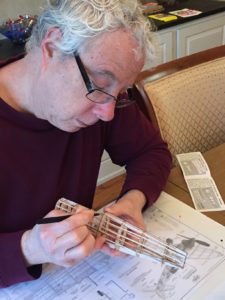
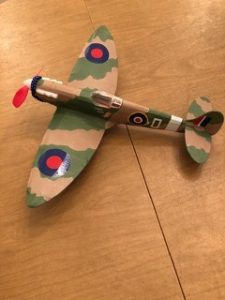 I exercised every day on my home treadmill, instead of a couple times a week, which was all I could fit in when I was working full time. I had a lot of fun building a balsa wood model airplane, which I had last done when I was 13. (Who has time for that?!) My plastic surgery skills came in handy: I found I had way more dexterity, focus and patience than I did when I was a teen!
I exercised every day on my home treadmill, instead of a couple times a week, which was all I could fit in when I was working full time. I had a lot of fun building a balsa wood model airplane, which I had last done when I was 13. (Who has time for that?!) My plastic surgery skills came in handy: I found I had way more dexterity, focus and patience than I did when I was a teen!
I read hundreds of backlogged articles in plastic surgery journals online, whittling my emails down to 0, and started back at work on a scientific paper. Most of all, I had a great deal of time with Joyce, my soulmate, best friend and wife of 47 years. For me, being housebound with her was like heaven on earth.
I came to appreciate FaceTime and Zoom. What a relief to see my daughter’s face when she recovered enough strength post-Covid to FaceTime with me. I had been quite worried when she texted her “final wishes” and expressions of love and appreciation to family and friends for fear she would not recover. Since we weren’t able to come in contact during her illness and for weeks after, this was the best we could do to get “close.” Fortunately, she has been completely better for months now, and hugs are back on the agenda.
Via Zoom, I participated in two virtual shiva minyans. This is the Jewish tradition of family and friends gathering after a funeral to honor and memoralize a loved one. The hugs were virtual, and I missed the in-person experience, but I felt like the sharing of memories was enriched because I was able to hear the words of everyone present on the video conference – and they could hear my reminiscences. Although it was different, it was still warm and loving.
During this time, Nazareth Hospital conducted weekly conference calls for physicians on staff, led by Michael Magro, DO, president, and Edward O’Dell, DO, vice president. The conversations about COVID and what was happening in the hospital and the community were frank, informative and extremely reassuring.
I’ve worked at Nazareth Hospital exclusively since 2001, and I’ve been very happy there. I’ve liked operating in the safety of the hospital with the general staff, sensitive and competent nurses and certified anesthesiologists and nurse anesthetists. And toward the end of May, when the state loosened restrictions on elective surgery and the hospital announced its thoughtful and thorough reopening plans, I was confident that my patients and I would be safe there as well.
In mid-May, in anticipation of the OR reopening, I resumed office hours. I didn’t know if women would be comfortable coming into the office when we reopened or what the level of interest would be for breast implants and breast lifts during the pandemic. I only had hope. Much to my surprise and delight, there was a huge pent-up demand for these services.
We established protocols to protect ourselves and the patients. We devised a questionnaire to screen patients when they called for an appointment. Patients were told to wear a mask. No children were allowed; if necessary, women could only bring a person they had quarantined with (if that person was also asymptomatic). On arrival, patients were checked with a non-contact thermometer and a pulse oximeter. Cosmetic breast surgery consultations were scheduled one hour apart so there wouldn’t be more than one patient in the office at a time.
We wore disposable gowns, masks and gloves and changed them between patients. We cleaned all hard and soft surfaces between patients as well and installed special air purifiers in strategic locations in the office. When possible, we maintained the recommended 6-foot social distance.
To break the ice in consultation (How odd that the patient and I couldn’t see each other’s face!) I pointed to an 8-1/2 x 11 color picture of George Clooney in his scrubs from his days on the TV show ER. I told my patients that this was how I looked under my mask – in case they were wondering! I 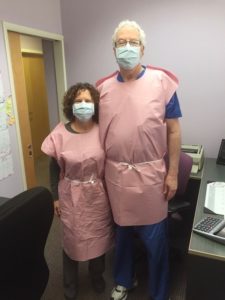 explained that my hair was white now because my dark dye had worn off during the pandemic. The women could relate. One patient said, “You look a lot like George Clooney.” “I get that a lot,” I replied. Another woman said, “The people who think that should get their eyes checked!” That was a savage burn.
explained that my hair was white now because my dark dye had worn off during the pandemic. The women could relate. One patient said, “You look a lot like George Clooney.” “I get that a lot,” I replied. Another woman said, “The people who think that should get their eyes checked!” That was a savage burn.
With the office bustling, I needed more help, and my wife agreed to work with me in the office a few days a week. Joyce has done my marketing and social media since I started practice, but it was new for her “to be in the room where it happened”!
Joyce told me that she was moved by my sensitivity and compassion with patients, and she enjoyed seeing a different side of me than she sees when we are in social situations. I would often share about my work day when I came home, but it felt good to me that she was witnessing me in action. It deepened our already significant respect and admiration for each other.
When the hospital set a start date for elective surgeries, I had high intention of getting my patients onto the operating room schedule. My staff worked hard to accommodate the new OR requirements and paperwork, including COVID-testing 48 hours before surgery (in addition to the routine preadmission testing). The first group were surgeries that were urgent (for example patients with implant deflations); the second group were patients whose scheduled surgeries were cancelled when the OR closed, and lastly new elective cosmetic surgeries.
While I enjoyed my downtime during the quarantine, I also missed work. It confirmed what I knew: that I loved my career as a plastic surgeon and wanted to continue working and making a difference in this way for as long as possible.
One of my brother’s philosophies (Ron, PCOM ’64) around the simplification of life was his belief that what largely matters is that you are happy where you head to in the morning and where you return to at night.
I’m one happy, and lucky, guy.
“Can you fix my tuberous breasts?”
Dr. Ted Eisenberg Corrects Tuberous Breasts With a New Simpler, Safer, One-Stage Procedure
It’s a question that women sometimes ask when they come in to Dr. Ted Eisenberg’s office for a cosmetic breast surgery consultation. They are asking about a congenital condition in which breasts might be longer and narrower, rather than round. The areolas may be puffy, there might be a lack of skin under the nipple, and the fold under the breast (the inframammary fold, or IMF) might be higher than usual.
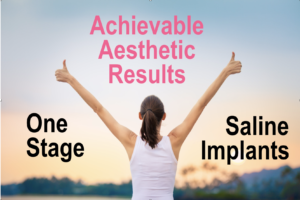 While plastic surgery websites and Internet forums describe a complicated approach to correcting tuberous breasts with silicone implants, Dr. Eisenberg has achieved an equally aesthetic result using saline breast implants in a one-stage operation.
While plastic surgery websites and Internet forums describe a complicated approach to correcting tuberous breasts with silicone implants, Dr. Eisenberg has achieved an equally aesthetic result using saline breast implants in a one-stage operation.
“Surgeons often recommend two options, both with silicone breast implants. One is a two-stage approach, in which they place an expander to break up the constricted (narrow) breast and later replace it with a permanent implant. The other is a one-stage approach that involves radial scoring (cutting breast tissue to expand the constriction) and lowering the IMF when necessary,” he explained.
Dr. Eisenberg has unparalleled experience; he has performed more than 7,000 breast augmentations, many with saline breast implants. He observed that when he placed a saline implants through the inframammary fold, it did the work of an expander. It broke up the constriction.
“This single surgery is less invasive; there is no radial scoring, no lowering of the IMF, and no drains. I can make a smaller incision when using saline than silicone implants because silicone come prefilled while saline are inserted prior to being filled. Plus, saline implants are less expensive.”
Dr. Eisenberg’s discovery was published in an article entitled “One-Stage Correction of Tuberous Breast Deformity Using Saline Implants,” which appeared in the Dec. 2019 issues of the American Journal of Cosmetic Surgery. He also lectured on the topic at the annual meeting of the American Academy of Cosmetic Surgery earlier this year in Las Vegas.
Along with offering his surgical colleagues another option for correcting tuberous breasts, he also shared his unique perspective: “Unfortunately, surgeons created the term ‘tuberous breast deformity’ (TBD) and it has spread from surgical literature to consumer magazines. It’s become a ‘thing’ and is causing unnecessary concerns for women.
“Women’s breasts come in all shapes and sizes, and in my opinion, they shouldn’t be labeled.”
When patients come to Dr. Ted Eisenberg’s office for their free consultation, they see before and after photos of women who started out similar to them in height, weight, breast size and shape. “They see the satisfactory aesthetic results that this one-stage technique offers,” Dr. Eisenberg says, “and they are relieved and reassured.”
This article was first published on an NBC affiliated news station in Youngstown, Ohio.
After Breast Augmentation: When Can I Sleep on My Side?
There’s a myth that after breast augmentation surgery, you’ll need to sleep on your back for a week or longer. Many of my patients believe it, and they are worried that they won’t be able to get to sleep, because they normally sleep on their side or their stomach.
They are not alone. According to th e Better Sleep Council, fewer than 15 percent of people prefer to sleep on their back.
e Better Sleep Council, fewer than 15 percent of people prefer to sleep on their back.
Let’s bust this myth: You don’t have to sleep on your back after breast augmentation surgery. You don’t have to stay up all night to make sure you don’t doze off and turn over onto your stomach. You can sleep any way you want from the night of surgery on, including on your stomach if you’re comfortable enough.
[WATCH OUR VIDEO: Do I Have to Sleep on My Back?]
Saline and silicone breast implants won’t pop if you sleep on them; they are extremely durable and can withstand a lot of weight. In fact, Allergan, an implant manufacturer, tests its implants by exerting 55 pounds of force on them repeatedly, up to 6.5 million times. (That would be equivalent to sleeping on your stomach for the next 17,808 years.)
Just as your contact lens can’t slip behind your eye, your breast implants can’t disappear into your body. They are carefully positioned in a space (a pocket) behind the pectoral muscle. Just like contact lenses, the implants can’t go anywhere because they bounded by muscle and strong tissues. The normal movement in the pocket won’t disrupt your healing.
The only factor limiting your sleep position is comfort. Most women tell me that they are fully comfortable sleeping on their stomach in about three weeks on average. They are comfortable sleeping on their side much sooner.
Sweet dreams.
Find out more about breast surgery recovery. Read “What to Expect the First Week.”
The information above is what I tell my patients to do and to expect after breast augmentation surgery: Each doctor has his or her specific postoperative protocol, and it might vary greatly from what you read here. It’s imperative that you follow your doctor’s instructions.
Am I Too Old for Breast Implants?
Absolutely not. There’s nothing wrong with wanting to look as good on the outside as you feel on the inside, no matter how old you are. If cosmetic breast surgery would make you feel better about how you look – in clothes or out – there’s no reason to rule it out.
To date, my oldest patient was 72. She had small breasts and had been thinking about getting breast implants for a very long time. She had a new boyfriend, and the time was right for her.
She’s not alone. According to the American Society for Aesthetic Plastic Surgery, more than 50 percent of breast augmentation patients are over age 35.
In my experience, older patients are highly motivated; they’re ready to make a change. They tell me that they’re fit and they feel good – younger than their age. Their kids are older and they have more time to take care of themselves.
What women want to know when they come in for a free consultation is if breast augmentation surgery can accomplish their goal. We answer that question by looking at before-and-after photographs of actual patients who started out similar to them in height, weight, frame size and breast volume. Read: Can You Make Me a Full C Cup?

No matter what you’re age, you’re never too old to look at before and after photos!
No matter how old you are, your general health will be evaluated to make sure that you can tolerate surgery, that you will heal well, and that surgery won’t make your condition worse. If it’s appropriate, your doctors will be contacted for medical clearance.
Depending on your age and family history, you may be asked to get a mammogram before surgery. The American Cancer Society recommends mammography screenings for women 40 and over and for any woman whose mother or sister has a history of breast cancer.
After surgery, at their post-op visits, older women have told me: “The process was so much smoother than I expected.” “Your staff and the hospital were terrific.” It was much easier than childbirth!” And “I can’t believe I waited so long.”
In her thank you note, a recent patient wrote: “Imagine: I never shopped for a bra in my life, never knew what it was like to have breasts, so to speak, and I was 43! I remember feeling unsure about my decision to have a breast augmentation, doubting whether I should invest so much in my physical appearance. But it has proven to be incredible; the breast augmentation surgery shifted my whole sense of myself as a woman as I gained unexpected confidence, pride and sensuality.”
Another patient wrote this: “Why didn’t I do this sooner? Finally, at age 58 I feel like a woman. I used to think my very flat chest was just me. But I found a whole new me – a new and improved version of the old me. I should wear a T-shirt that says: I waited 58 years for these and thanks to Dr. Eisenberg I have them!
Can I Get a Mammogram If I Have Breast Implants?
More than one-third of a million women in the United States have breast augmentation surgery each year, which means that radiologists are likely to have experience evaluating breasts with implants. When you register for your mammogram, the staff will likely ask you if you have breast implants. If they don’t, you can let them know. To maximize the amount of breast tissue that can be seen, the technician will gently displace (push up) the implants and will take extra views of each breast. Watch: “Can a Mammogram Break a Breast Implant?”




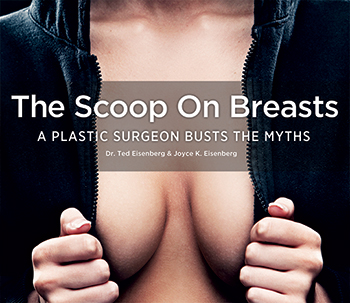 CLICK HERE TO BUY
CLICK HERE TO BUY







